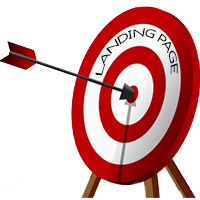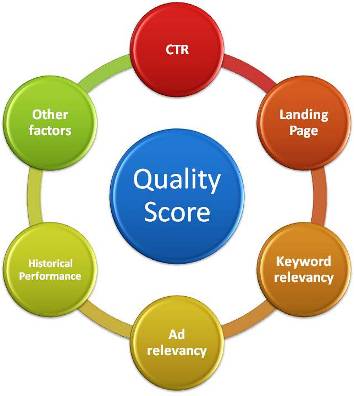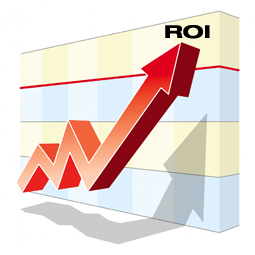PPC Marketing is an effective technique to make your business appear on Google. In our previous blogpost on we have already discussed How to create Google Adwords campaign. Today, we shall discuss a few essentials tips that would help you increase ROI (return on investment) on your PPC ad campaign.
1. Make an Offer, they can’t Refuse:
The Godfather said it right, and all marketers should live by it (don’t use a gun, though). Marketing your business implies offering value to the customer. Give your competitors a little more run for their money. Make an exciting offer to your visitors, that compels them to fill the form and sign up for your service.

For Example: A real estate business ad might read, “Beautiful Beach Houses with Discounts upto 20%. Guaranteed Lowest Rates” or “Great Residential Plots. Pay only 25% and rest on possession. Visit the site today“. People who search for properties in coastal regions or township areas would surely get excited to see the discount offer.
Draw in more (relevant) customers to click on your ad or visit your website. Encourage them to act and let them know what to expect on the other side of the click. Make sure you provide a distinct CTA button on the landing page along with the offer. Give your name and contact number above the fold to enable them reach you easily.
2. Make your Ad, Location Specific:
Google Adwords enables you to make your PPC marketing campaigns location specific. So you can target or exclude a particular region or territory while you create an ad. This helps you to make your ad visible only to customers from that specific location.

For example: A real estate business marketer who runs an ad for “Beautiful Beach Houses in Goa“, might prefer limiting his ad campaigns to appear only within Goa and target customers in that specific location. So he can prevent his marketing budgets from being wasted on irrelevant clicks.
Almost all search engines like Google, offer Geo-location features. So its easier for marketers to create more targeted PPC marketing campaigns.
3. Say ‘Hello‘ to Negative Keywords:
Using Negative Keywords can give you a positive outcome. Confusing, right? The fact is that negative keywords in PPC ad campaigns, signify those words that do not trigger your ads to appear on search engines if they are typed by a user.

You can create a list of negative keywords and put them into your ad campaigns at the time of structuring them.
For Example: If your ad campaign is about “Beautiful Beach Houses for Sale“, keywords like ‘Rented’, ‘Lease’, etc serve as negative keywords for you. You can create a list of such words and put them into your ad campaign. Google will make sure that it does not trigger your ad for these search queries.
This will help you filter down your prospective customers and save your PPC marketing dollars.
4. Use long tailed keywords:
Long-tailed keywords help you to make your ad message more specific. The reason is that very specific search queries are usually long tailed.

For example: A person searching for ‘Beach Houses in Goa’ might end up searching with a long-tailed keyword like ‘Luxurious Beach Houses in Goa for Sale’.
Making your keywords long-tailed might get you more customers for conversion. Adding high intent keywords like ‘Buy‘ can help you attract that exact bunch of customers who are at the verge of purchasing a product similar to yours. Google Adwords Keywords Tool will help you search for relevant long-tailed keywords for your ad campaigns.
5. Keep Testing for Improvements:
There is no doubt that a successful PPC marketing campaign is always a product of proper testing and analysis. Test data helps you understand and improve your ad campaign performance.

Setting up A/B tests to track your ad campaigns is a good practice. Test multiple ads simultaneously and run those which work the best. While testing various ad copies and landing pages, do not forget to evaluate the Quality Score and CTR. This will help you make your ads rank higher on Google Adwords.
Try experimenting with the font style, text, images and color themes of the landing pages of your ad. Do it with great caution and while you alter setting, prevent losing useful data. I have seen how slight changes in text placements or colors make ad campaigns successful overnight.
6. Remember! Homepage is not a landing page:
Never make a mistake of linking your ad campaigns to your website homepage.Create a simple landing page that highlights your ad message clearly.

I would suggest, you create a high quality standalone landing pages for your ad campaigns. Customize it with all the essential features that would help you convert more visitors.
A good landing page might also highlight the special features of the product or service offered. Keep it above the fold so that it grabs the visitor’s attention at once.
Bringing a visitor to your homepage might confuse and put him off. So, why miss out those chances of conversion when you have already spent a part of your PPC marketing budget on the clicks.
7. Analyze & Improve Quality Score:
Quality Score, is a rating scale on Google Adwords that helps you to determine the complete performance of your ad campaigns. It takes into account certain points like relevance, keywords, CTR, ad performance and more.

It grades your campaign on a score of 10. Any score which is equal or less than 4 is considered as below average and requires improvement. This analysis will help you to know how is your ad performing and what would be your ad position.
A good quality score would make your ad appear at the top of the page on Google. Better the quality score lower will be the ad cost (Cost-per-Click) and easier it will be to make your business visible.
The landing page quality (Landing Page Experience) also influences the quality score of your ad campaigns. Thus, you can alter and manage your PPC marketing ad campaigns accordingly.
8. Track your Conversions without fail:
Tracking conversions implies making a note of all the keywords and ads that bring you business. This can help you boost up your ROI. Running a campaign with proper tracking system in place is a good practice. If you are not doing this you are simply flying blind.

Google Adwords has all provisions available for you to track your ad campaigns and reach out to your potential customers globally. You just have to add a single snippet of HTML and JavaScript code which is generated in Adwords to your webpage.
Google Adwords Conversion Tracking system can help you to track your ads. Google Analytics is also an effective tool. It gives a little more information about the lead source and is great for comparison.
9. Pay Attention to the Search Query Reports:
Search Query report shows you all those keywords that your ad has generated. This will help you identify those keywords that are bringing more traffic to your ad campaign.

You may also get to know which keyword will get you more conversions.
Search Query Reports are available on Google Adwords itself. The Dimensions tab allows you to see the list of search terms that triggered your ad for your entire account, or specific campaigns or ad groups.
Add these keywords and customize your campaigns. Search query reports also give you an idea about the negative keywords and help you narrow down your target customers.
10. Make it Creative & Unique:
Landing page with creative messages and unique CTAs (Call-to-Action) have always worked better on conversions. Catchy phrases on the headlines or subheadings can grab the customer’s attention.

Conveying your message correctly along with little dozes of creativity, might help you attract more visitors to your website.
You may never know, when and what might trigger conversions and make your PPC marketing plan successful. Even the slightest change like color and text position can attract more leads and give your business a boost like never before.
So what are you waiting for? Customize your PPC marketing campaigns today and start increasing your Return on Investment. Do you have any PPC Marketing Tips that work the best for you; share them with us!









![[Webinar] Sales Automation 101: Unclog your Sales Pipeline](https://www.leadsquared.com/wp-content/uploads/2024/04/automation-webianr-popup.gif)